Why the Supreme Court’s power plant ruling isn’t ‘game over’ for the climate
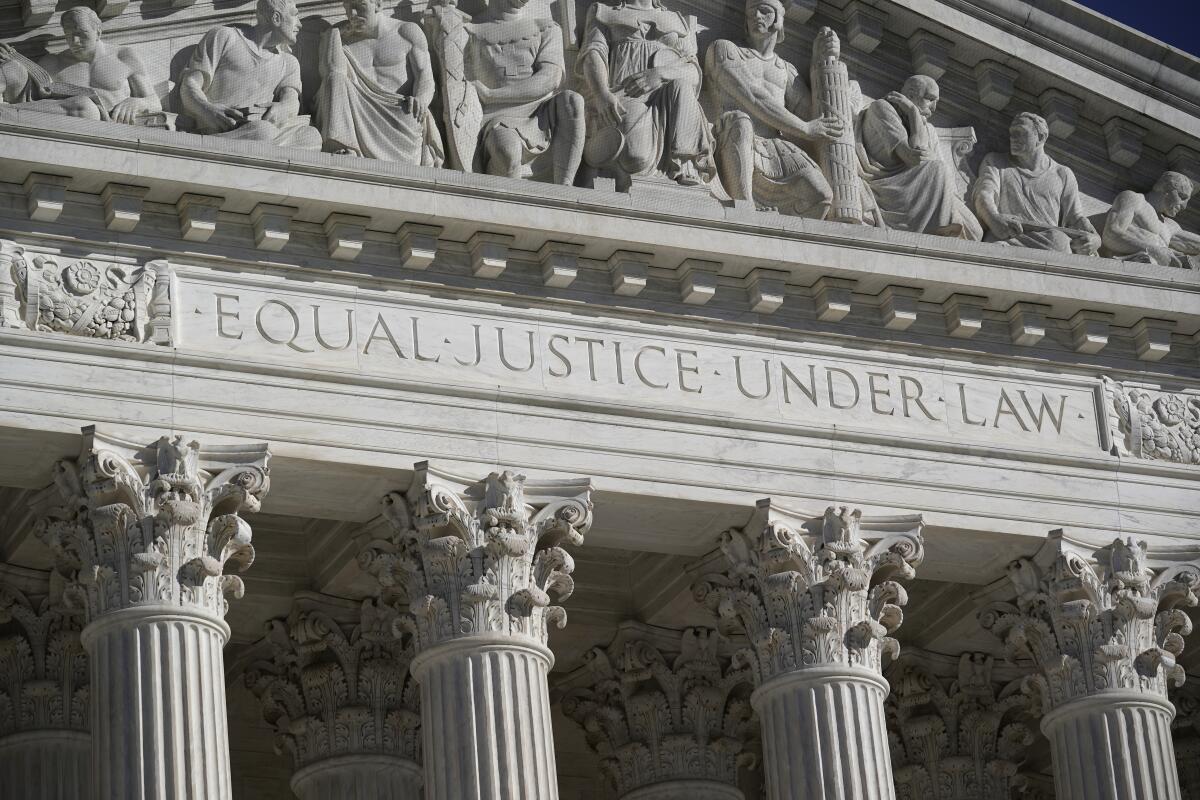
- Share via
This is the July 7, 2022, edition of Boiling Point, a weekly newsletter about climate change and the environment in California and the American West. Sign up here to get it in your inbox.
The Supreme Court’s conservative majority is pulling no punches. After eliminating the constitutional right to an abortion, limiting the separation of church and state and striking down concealed-carry gun laws in several states, the court’s Republican-appointed justices ended their term last week by chipping away at the federal government’s ability to fight the climate crisis.
You’ve almost certainly already heard the news; if not, my colleague David G. Savage wrote about the case. In a 6-3 decision, the court ruled the Environmental Protection Agency lacked authority for a broad Obama-era plan to slash planet-warming pollution, handing a victory to West Virginia and 17 other fossil-fuel-friendly states that sued to block the regulation.
Chief Justice John G. Roberts Jr. acknowledged in his majority opinion that EPA’s proposal may have been “a sensible solution to the crisis of the day.’” But a decision of “such magnitude and consequence,” he wrote, “rests with Congress itself.”
The odds of Congress passing sweeping climate legislation are not high. But even as global warming worsens wildfires, water shortages and heat storms, the Supreme Court ruling is far from “game over” for climate.
Here’s why.
First and foremost, the Obama-era regulation that the high court struck down — known as the Clean Power Plan — was actually pretty weak. It would have required power companies to reduce emissions from electricity generation 32% below 2005 levels by 2030 — a goal the power industry met on its own a decade ahead of schedule, even though the Obama rule never took effect, as Benjamin Storrow notes in his coverage of the Supreme Court decision for E&E News.
That progress was driven by several factors: coal plants shutting down as increasingly low-cost solar and wind power put them out of business; activists campaigning to shut down polluting facilities in front-line communities; investors putting pressure on publicly traded companies to clean up their act; and state and local governments taking action to slash emissions.
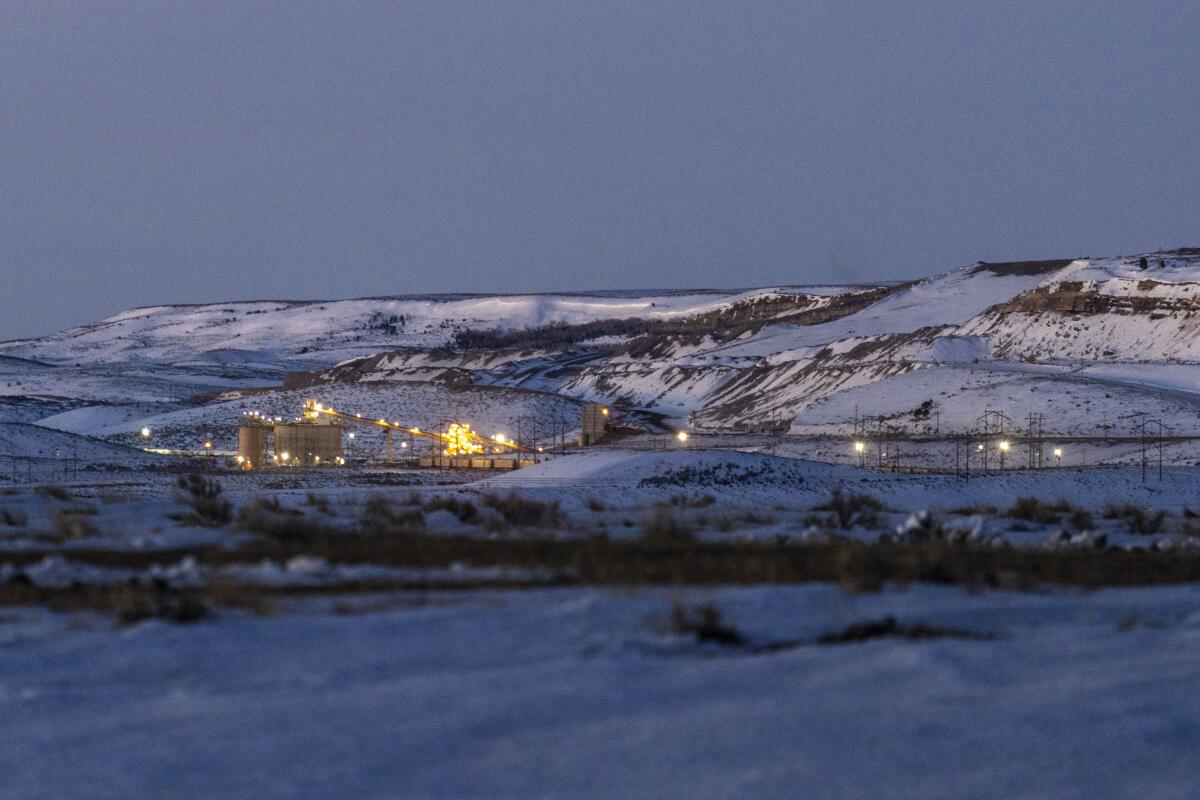
Those trends will continue, with state and city actions increasingly important in the wake of the Supreme Court ruling. As Cara Horowitz, co-executive director of UCLA’s Emmett Institute on Climate Change and the Environment, told my colleague Tony Briscoe, “Any time federal power to regulate climate change is constrained, state power gets more important.”
“California has always been a leader in the fight against climate change, and I expect that will continue and become even more crucial. States have a lot of regulatory power that this Supreme Court’s ruling does not touch,” Horowitz said.
At the same time, just because Gov. Gavin Newsom and other state officials are saying the right things about redoubling California’s climate efforts doesn’t mean they’re necessarily doing the right things.
As I wrote last week, the Golden State’s new plan for reducing fossil fuel use while keeping the lights on has drawn intense criticism from many environmentalists because it could keep gas-fired power plants in business, at least for a few more years. Newsom issued a “signing statement” clarifying his intent to prioritize clean energy, but that doesn’t have the force of law.
Then there’s the state’s oil and gas regulator, which continues to face questions over its ability — and willingness— to protect low-income communities of color from the health harms of fossil fuel extraction. The Desert Sun’s Janet Wilson reports that state inspectors in Kern County have been pressured to conduct many oil and gas safety checks from their desks rather than in the field, and to focus on wells clustered far from homes and schools to boost their numbers.
There are plenty of other places where clean energy advocates say the state is falling short. And it’s not just California. A new analysis from think tank RMI concludes that five other states seen as climate leaders — Colorado, Illinois, New Jersey, New York and Washington — don’t have policies in place that would cut carbon emissions in half by 2030, seen as a crucial midway point on the path to net-zero emissions by 2050, which scientists say is needed to avoid the worst consequences of global warming.
So states have an opportunity to step up on climate — if they choose to take it.
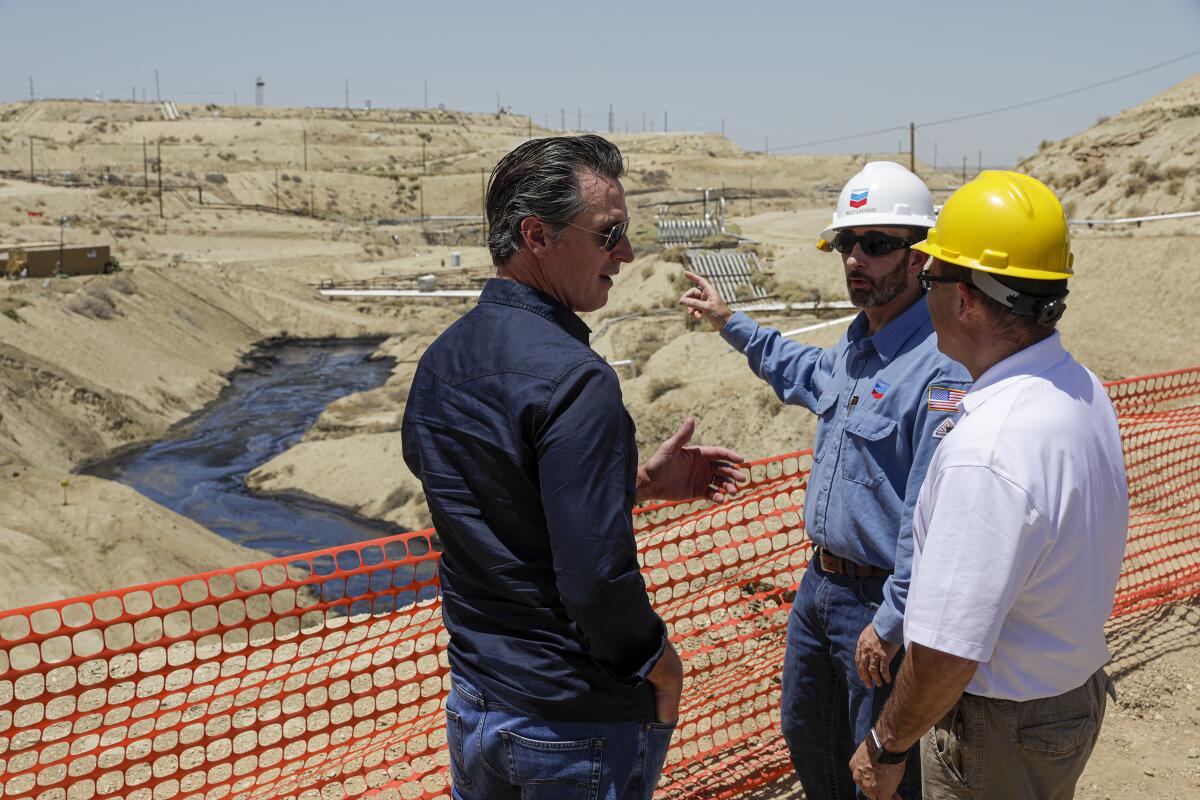
Meanwhile, it’s not like the federal government is completely out of commission. The infrastructure bill signed by President Biden last year committed tens of billions of dollars to support clean energy technologies, from electric cars to green hydrogen. And while a truly comprehensive climate bill isn’t currently in the cards, negotiations continue on a budget bill that could include significant incentives for solar and wind power (although its fate likely rests with coal-loving West Virginia Sen. Joe Manchin III).
There’s also all sorts of speculation about what the Supreme Court decision might mean for future climate regulations, and their ability to withstand judicial scrutiny. For a good rundown, see this piece from Marianne Lavelle at Inside Climate News.
But there’s no question the Biden administration has options. The Supreme Court didn’t entirely revoke EPA’s authority to regulate greenhouse gases, meaning the agency could try to limit emissions from coal and gas plants by requiring carbon capture systems, as David Iaconangelo, Niina H. Farah and Carlos Anchondo write for E&E News. The agency could also tighten restrictions on pollutants such as mercury and nitrogen oxides, which would have the side effect of reducing carbon dioxide.
Then there are public lands — a major source of U.S. oil, gas and coal. Biden campaigned on a pledge to end fossil fuel leasing on federal lands and waters. Although he hasn’t honored that pledge — partly due to a federal judge in Louisiana striking down Biden’s leasing pause last year — there are signs his administration is beginning to take it seriously.
The Interior Department’s new offshore drilling plan, for instance, could allow up to 11 oil and gas lease sales in the Gulf of Mexico and off Alaska — but it also preserves the option of zero lease sales, the Guardian’s Edward Helmore reports.
The Biden administration also downsized its first onshore oil and gas lease sale last week. The sale didn’t generate much industry interest, with a single parcel in Wyoming receiving $8.9 million of the $12.5 million in high bids, per Reuters’ Nichola Groom.
How far is the Biden administration willing to go to test the limits of climate regulation? Nobody knows. It’s possible the Supreme Court decision will spur Biden to more aggressive action. Or maybe he’ll keep holding back, especially if he thinks too much regulation would anger Manchin and stop him from supporting a budget with clean energy incentives. Many see that as a dangerous game, considering Manchin’s track record of blocking climate provisions in the failed “Build Back Better” bill.
One way or another, Congress will need to act eventually. Even before the Supreme Court ruling, limiting global warming to 2 degrees Celsius was going to be tough without coordinated action by the world’s biggest historic polluter, the United States.
Which brings us to the final point: The odds of significantly slowing climate change were already low before the Supreme Court threw another wrench in the works, and they’re still low now. That may sound like reason to despair, but to my mind, it’s a reminder not to give up hope. Accelerating the transition from fossil fuels to clean energy was always going to be hard, and it’s still going to be hard. Nothing fundamental about the climate fight changed last week. The uphill climb continues.
On that note, here’s what’s happening around the West:
TOP STORIES
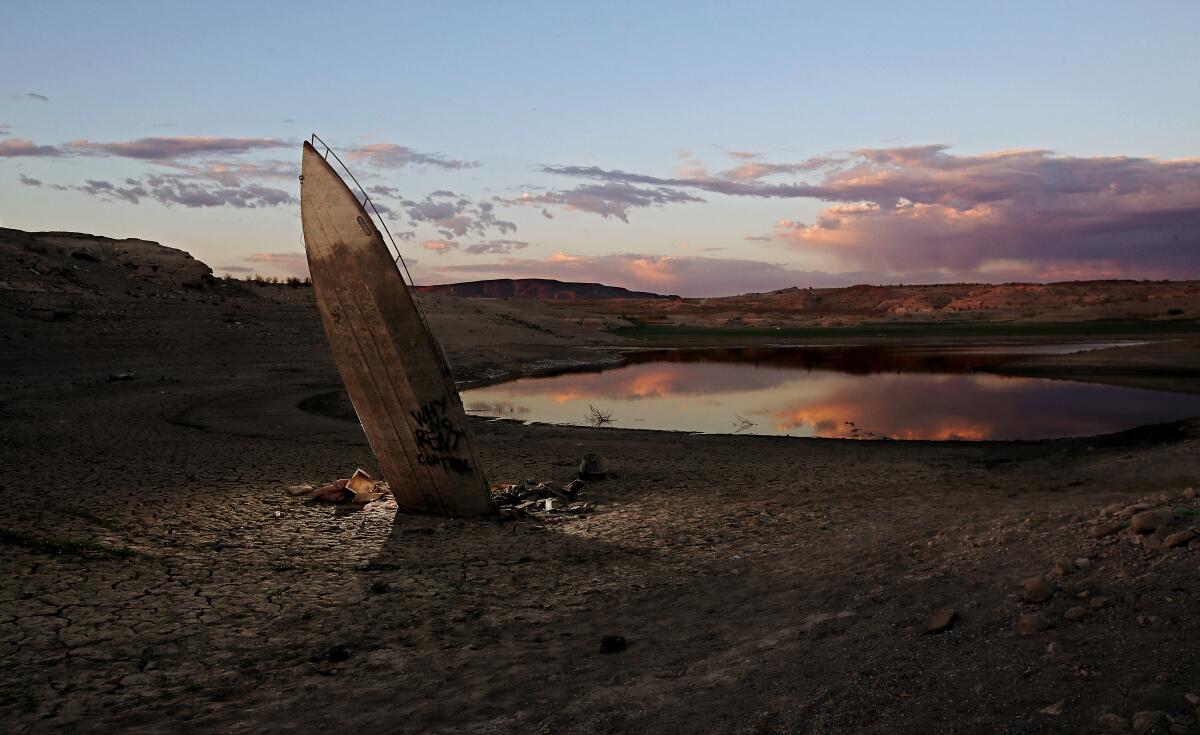
“It’s hard to stand in the heat. It’s hard to breathe. It’s hard to think.” So writes L.A. Times photographer Luis Sinco, who captured a dramatic series of images of Lake Mead, the West’s largest reservoir, where falling water levels have revealed sunken boats, dead bodies and other detritus. In California, extreme heat and aridification are permanently scarring the state and its social fabric, my colleague Hayley Smith writes, with many unknowns to come. For now, we’ve got the spectacle of more than 1 billion pounds of unsold almonds sitting in storage piles because there are no ships to take them overseas, as chronicled by The Times’ Louis Sahagún. We’ve also got entrepreneurs thriving — legally and illegally — in what Andrea Chang calls “the drought microeconomy.” Here’s her story on the Southern California businesses obtaining, conserving and in some cases stealing water.
How bad was L.A.’s air quality after July 4 fireworks? “You need a big wildfire to get to those levels,” one expert told told my colleague Grace Toohey. I enjoy fireworks as much as the next person, but seriously, we need to stop doing this to ourselves. We also need to cope with extreme heat, which is plenty deadly on its own and also worsens air pollution. Kaiser Health News’ Heidi de Marco had an interesting conversation with Marta Segura, director of L.A.’s Climate Emergency Mobilization Office, who’s working to protect Angelenos from rising temperatures as the city’s first chief heat officer. The Desert Sun’s Erin Rode, meanwhile, wrote about the need for more tree planting and other heat safety measures in California’s Coachella Valley, which is already crazy hot.
California lawmakers approved a flat tax on lithium production at the Salton Sea, to benefit low-income communities of color in the Imperial and Coachella valleys. Here’s the story from the Desert Sun’s Janet Wilson, who writes that some industry executives worry the tax will stop production in its tracks. One way or another, we’ll need lots of lithium; demand for electric vehicles propelled by lithium-ion batteries is so high, some Tesla owners are flipping their cars like houses, The Times’ Ronald D. White reports. But as I’ve written previously, electric vehicles won’t solve all our problems. In a powerful reminder that driving a car is the most dangerous thing most of us do every day, my colleague Russ Mitchell has a startling story about the true risks of distracted driving — not just from using smartphones, but from stuff built into the car that we shouldn’t assume is safe. In related news, crime is up on L.A. buses and trains — but local transit officials have a plan to help riders feel safe, Rachel Uranga reports.
WATER IN THE WEST
Low water levels are allowing smallmouth bass to get through Glen Canyon Dam, threatening the existence of humpback chub in the Grand Canyon — the only stretch of the Colorado River still dominated by native species. Here’s the unfortunate story by Brittany Peterson at the Associated Press. In better news for wildlife advocates, a federal judge threw out several Trump-era rules weakening endangered species protections, with implications for California salmon, northern spotted owls and more, the AP’s Matthew Daly writes. Also good for wildlife: the recent Yellowstone River flooding. SJ Keller has a thoughtful piece for National Geographic about the benefits for cottonwood trees, native trout, migratory birds and other parts of the riparian ecosystem.
An appeals court says the Los Angeles Department of Water and Power can cut back on irrigation water for Mono County ranchers, reversing a lower court’s decision. Suzanne Potter has the details for Public News Service. Also check out Sahagún’s story from last year on the conflict, the latest in a long history of tension between L.A. and the faraway places it grabs water from. In another story of drying Western water bodies, the Great Salt Lake just hit a record low level — for the second time in a year. Half the lakebed is dry, and it’s only going to get worse, the Salt Lake Tribune’s Leia Larsen writes. These kinds of complex conflicts help explain why Utah will start training judges to specialize in water law, as the Salt Lake Tribune’s Saige Miller reports.
Many tech companies don’t track how much water they use at data centers, let alone report it publicly. Worsening drought in the West could change that, Lisa Martine Jenkins writes for Protocol, in an important story about a big water-sucking industry that doesn’t receive enough scrutiny. If you’re looking to do your own part to conserve — however small it might be compared to a company such as Google or Microsoft — The Times’ Jeanette Marantos has some fun, useful stories about a Koreatown resident changing up his landscape in line with the traditional Japanese aesthetic of wabi-sabi, a teenager growing food with recycled water and fish poop, and a group of nuns replacing lush green lawns with community gardens. Oh, and if you’re skeptical about recycled sewage water? KPCC’s Erin Stone drank a glass of purified H2O at an Orange County facility and explained how it’s cleaned up.
POLITICAL CLIMATE

Newsom signed the nation’s most sweeping law to phase out single-use plastics and packaging waste. My colleagues Susanne Rust and Anabel Sosa reported on the new law, writing that it puts California “at the forefront of national efforts to eliminate polystyrene and other plastics that litter the environment, degrade into toxic particles and increasingly inhabit human blood, tissue and organs.” In other legislative news, California could soon become the fifth state to legalize composting as an alternative to casket burials. The bill being considered by lawmakers would reduce planet-warming pollution, Anabel reports.
The state budget signed by Newsom last week includes $9.5 billion in gasoline refunds, $1.4 billion in utility bill assistance, a suspension of the sales tax on diesel fuel, $75 million in drought relief grants and $4.2 billion for a bullet train through California’s Central Valley. More details here from The Times’ Taryn Luna. Even as state officials dish out all that money, they’re also asking Biden’s Environmental Protection Agency to declare the contaminated Exide battery recycling plant in Vernon a Superfund site, to unlock federal funds to help play for its cleanup. Southern California News Group’s Jason Henry has the story.
Pipeline companies have poured millions of dollars into Natural Allies for a Clean Energy Future, a marketing campaign to convince young, Black and Latinx Democratic voters that natural gas is a clean fuel. The firms involved include the Williams Companies, TC Energy, Kinder Morgan and Southern Company, Taylor Kate Brown reports for Floodlight. The campaign has also involved senior leadership from DTE Energy, the company whose ties to a dark-money group I wrote about two weeks ago. And in the latest reminder that gas is a substantial contributor to the climate crisis, new research finds that rising temperatures are fueling higher methane concentrations in the atmosphere — a dangerous feedback loop, as Kate Ravilious writes for the Guardian.
THE ENERGY TRANSITION
Under pressure from Gov. Gavin Newsom, Pacific Gas & Electric says it will, in fact, apply for federal funding to help keep the Diablo Canyon nuclear reactors humming. It’s far from a sure thing the plant will stay open past its planned 2025 closure date, though; as Rob Nikolewski writes for the San Diego Union-Tribune, PG&E says rescuing Diablo Canyon would also require legislation, and regulatory approvals from federal, state and local agencies. In another PG&E effort that could help California keep the lights on, the utility company is partnering with Tesla to aggregate electricity stored in people’s home batteries, and export that electricity to the grid to help meet demand at high-stress moments. Details here from Elizabeth McCarthy at Utility Dive.
Californians will have a chance to vote this fall on a wealth tax that would direct billions of dollars toward electric vehicle rebates and charging stations, along with more firefighters and projects to reduce wildfire risk. The ballot measure would raise income taxes on people making more than $2 million a year, Paul Rogers reports for the Mercury News. The proposal comes as wildfire season intensifies, with more than 1,300 firefighters currently battling the Electra fire near the North Fork of the Mokelumne River, which ignited Monday and has left thousands of PG&E customers in Amador and Calaveras counties without power, The Times’ Grace Toohey reports. Thirteen firefighters were injured working to contain another Northern California blaze last week, Hayley Smith and Gregory Yee report — mostly by heat-related illness. In better news, parts of Big Basin Redwoods State Park will reopen this month after being scorched by 2020’s CZU Lightning Complex fire, Louis Sahagún writes.
Every time boom turned to bust in the San Juan Basin oil and gas patch, economic diversification went out the window. With a long-term fossil fuel slump showing no signs of ending in this part of New Mexico, will the region finally start to rethink its economic lifeblood? Jonathan Thompson asks that question in a thoughtful story for High Country News, writing that oil and gas companies are so deeply ingrained that the community “can feel like an extension of the industry.” As a result, “efforts to rein in industry, mitigate pollution, or even diversify or transition the economy are therefore perceived as an attack on the community.” It’s a point that applies to rural towns across the West — and an important idea for urban activists and politicians to keep in mind.
ONE MORE THING
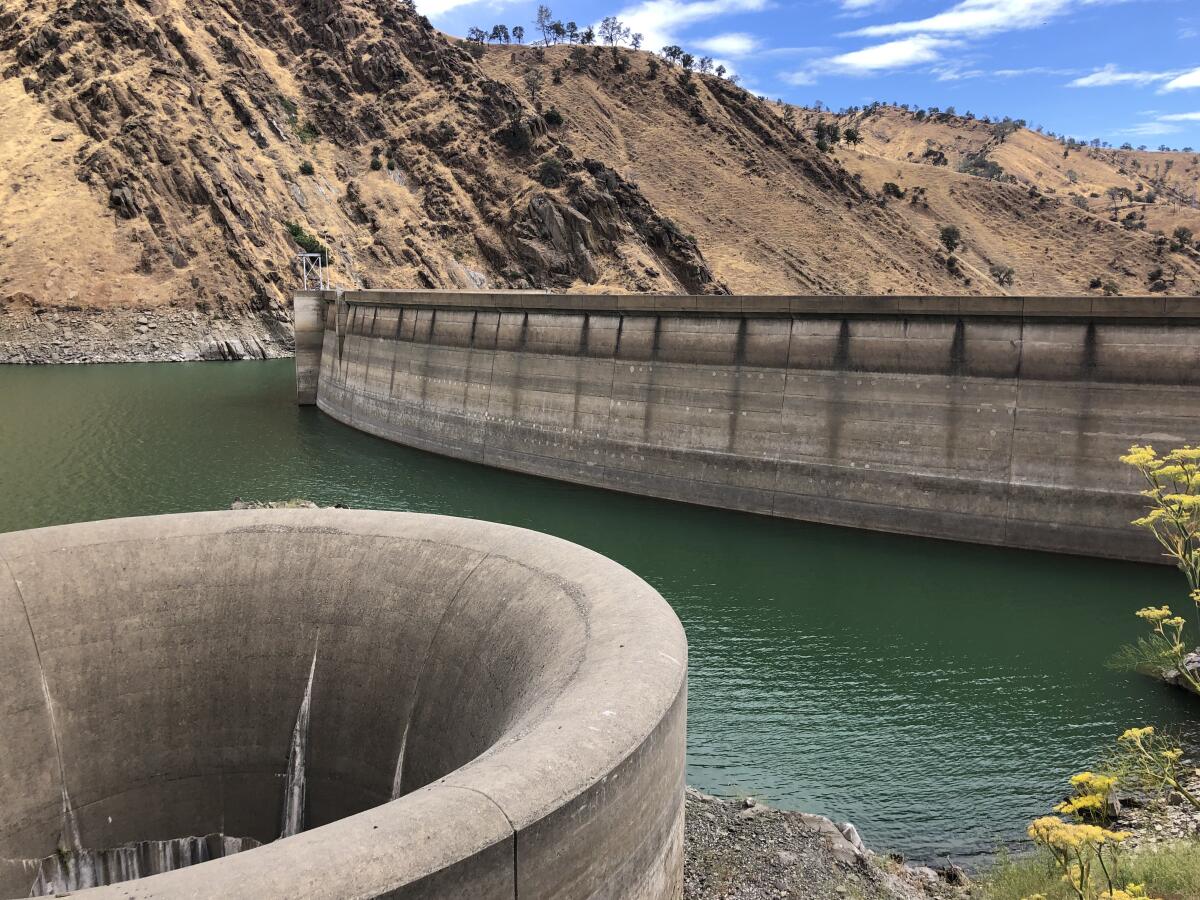
You might remember dramatic photos and videos a few years ago — when California was between droughts — of the unique spillway at Lake Berryessa near Sacramento, commonly known as the “glory hole.” Rains had filled the reservoir, behind Monticello Dam on Putah Creek, and mesmerizing footage showed a waterfall in the middle of the lake as it drained through the spillway.
I stopped by Berryessa this weekend and was struck by how far water levels have fallen. I shared some photos on Twitter. A stark bathtub ring lined the reservoir’s edges, just like at Lake Mead and Lake Powell. The concrete glory hole stood high and dry.
Aridification is real, and it’s everywhere.
We’ll be back in your inbox next week. If you enjoyed this newsletter, please consider forwarding it to your friends and colleagues.






